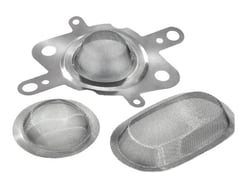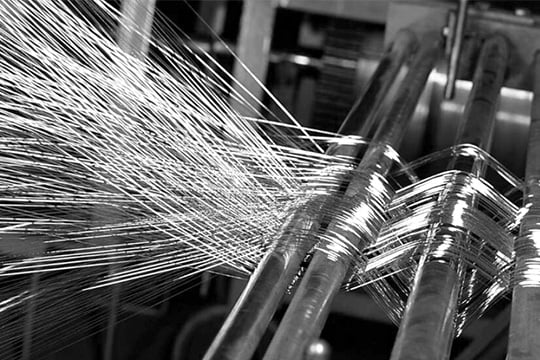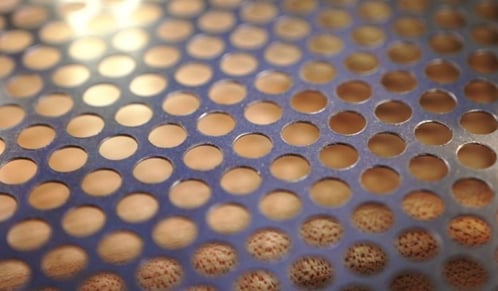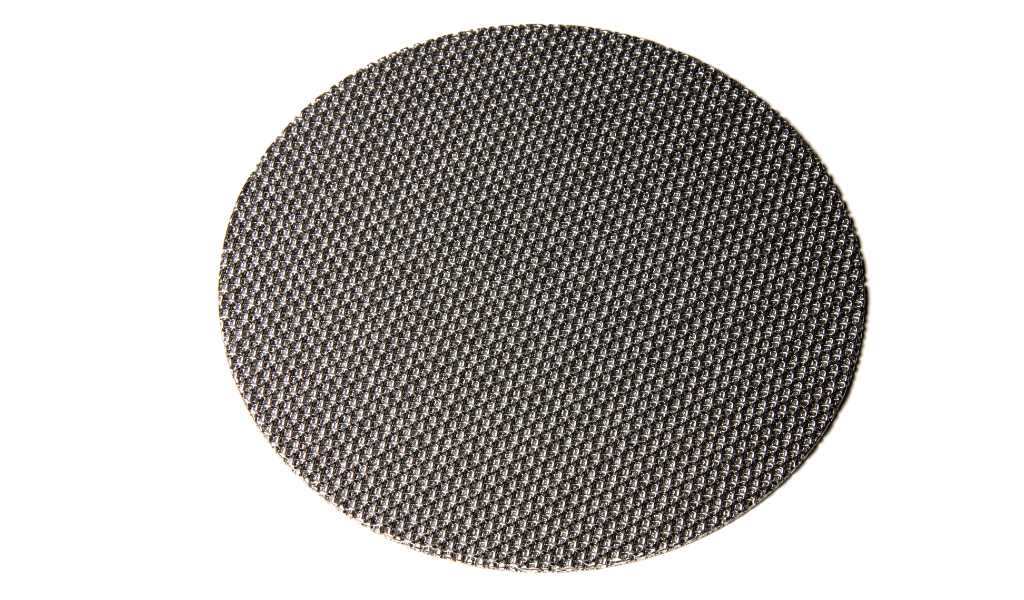Perforated Plate vs. Woven Wire Mesh Filters: Which Is Best For Me?
Regardless of what your filtration operation looks like, accuracy is key to achieving reputable results. That said, floor engineers and system operators must prioritize optimizing their filter system.
Doing so requires a filter medium that best suits their needs to be identified. This involves comparing the benefits and drawbacks of the most popular filter media, such as woven wire mesh filters and perforated plate filters.
So, how exactly do the two filter media compare?
Having been a prominent supplier of wire mesh filters for over 150 years, W.S. Tyler strives to ensure your filter system runs as efficiently as possible.
With that, this article will establish:
- What a wire mesh filter is
- The benefits of a wire mesh filter
- The drawbacks of a wire mesh filter
- What a perforated plate filter is
- The benefits of a perforated plate filter
- The drawbacks of a perforated plate filter
What Is a Wire Mesh Filter?
Wire mesh filters are an assortment of metallic wires that undergo a centuries-old weaving process to form a filter media that features rigid, precise pore openings. As it is a pliable material, wire mesh filter cloth can be shaped and formed to accommodate a wide range of filtration applications.

This level of customization extends to all aspects of the mesh filter. Parameters, including the mesh count, wire diameter, weave pattern, layer configuration, and alloy, can all be customized to match your filtration requirements.
To gain a better understanding of what can be achieved with a wire mesh filter, read the following article:
How Is a Wire Mesh Filter Produced?
To fabricate a wire mesh filter, a specialized weaving loom that is specifically designed to properly weave metallic wires is employed. This weaving loom typically consists of a warp beam, heddle frames (predetermined amount), a rapier band, a reed, and a front take-up mechanism.
At the beginning of the weaving process, the individual wires are attached to the loom warp beam in the order in which they will be positioned in the weave. The wires are then wrapped around the warp beam several times, depending on the length of the filter cloth being woven.
Once the warp beam is set up, the wires are threaded through the heddle frames followed by the reed, in order from one end of the warp beam to the other. This assembly is then transported to the weaving hall, and the weaving loom initiates the weaving process.
As the loom begins operation, the warp beam unwinds a small increment of wires. To maintain uniform tautness throughout the warp wires, the front take-up mechanism winds the woven cloth in the same increments in the same direction.

Now, after the two beams make this slight movement, the two heddle frames snap into position. Heddle frame one will pull one set of warp wires up with heddle frame two driving the other set of wires down.
At this point, the rapier band shoots a single wire, known as the weft wire, in between the two sets of wires. It should be noted that the weft wire is wound and delivered from a separate wire spool that is attached to the loom itself.
After the weft wire is successfully positioned across the width of the mesh, the reaper band then returns to its original position, gathering another weft wire.
At the same time, the reed drives the weft wire into its final position and creates a precise cross-section. This completes the first cycle of the weaving process.
The reed will return to its resting position with the warp and front take-up mechanism rotating in the same initial increment, initiating a new cycle. This cycle of movements is repeated hundreds, thousands, or over a million times depending on the specifications and length of the wire mesh cloth being woven.
For a more in-depth breakdown of the weaving process, refer to the following article:
What Are the Benefits of a Wire Mesh Filter?
The most beneficial aspect of wire mesh filters is that they are available in a wide range of mesh specifications. With a mesh count range of 4” to 20 microns (635 mesh), mesh filters deliver the high level of accuracy floor engineers and system operators come to expect from a filter medium.
Additionally, the wires themselves can be woven to form different weave patterns, each with its own unique characteristics. This helps ensure the mesh filter properly removes contaminant particles while maintaining a desired flow rate.
Read the article below to learn more about the weave patterns available to you:
What Are the Drawbacks of a Wire Mesh Filter?
The most noteworthy drawback associated with wire mesh filters is that mesh filters become more delicate as the mesh openings get finer, especially when compared to perforated plate. This is because as the mesh count increases, the wire diameter decreases, affecting the durability of the mesh.
To that end, when working with mesh filters, the pore openings have the potential to be skewed over time. If a certain percentage (based on the industry-standard) of mesh openings is altered, your filter won't be as effective as intended, and you will need to replace your filter.
What Is Perforated Plate?

Perforated plate is most commonly described as sheet metal fabricated by one of several methods to create openings or holes of a desired size and pattern. Perforated plate (or perf plate) can be used in filtration much in the way that woven wire mesh can but has a different set of strengths and weaknesses.
How Is Perforated Plate Produced?
Perforated plate can be made of stainless steel or any exotic alloy that can be formed into a sheet and stamped. That said, there are four techniques that are applied when fabricating perforated plate: perforating press, laser cutting, plasma cutting, and water jet.
Perforating Press
Plate metal goes through a roller, which has a distinct pattern on it. The roller punches the pattern into the plate metal.
Laser Cutting
A laser burns small holes accurately, typically used for smaller openings and more precise patterns.
Plasma Cutting
Capable of cutting any thickness of the material.
Water Jet
Hyper-pressured water is used to cold cut the perforated plate. It can be used with pure water, or abrasives can be added.
What Are the Benefits of Perforated Plate?
The uniform nature of the stamped holes allows the perforated plate to deliver adequate filtration at an exact cut point. It is typically produced in filter sheets that can be rolled into cylindrical filters.
Additionally, as perforated plate is constructed of sheet metal, it tends to be more durable than wire mesh filters. This is especially beneficial when an application calls for the filtering of particles that tend to be more coarse and abrasive.
What Are the Drawbacks of Perforated Plate?
Due to the fact that a flat sheet is easier to blind as the open area is reduced, perforated plate is typically less effective at smaller pore sizes (or hole openings). In contrast, woven wire filter mesh can normally provide a smaller cut point with more throughput.
It should also be noted that perforated plate filters aren't as closely regulated as mesh filters. This can make it challenging to implement perforated plate in applications that call for heavily regulated equipment, such as sanitary pipe system filtration.
Better Understand if Woven Wire Mesh Filters Are Right for You
Achieving adequate filtration that is both accurate and efficient is the key to the success of any filtration operation. Doing so requires floor engineers and filtration system operators to compare and contrast various filter media, such as woven wire mesh and perforated plate.
For those who are considering integrating woven wire mesh filters into their filtration operation, you must continue to explore your filter media options. This will ensure your filter system delivers the best possible results efficiently.
Having helped customers leverage the versatility of wire mesh filters for over 150 years, W.S. Tyler is here to help you integrate a filter media that is right for your specific needs.
Refer to the following article to help in the identification of the ideal filter media:
About Sam Badger
Sam has been a part of the W.S. Tyler family for three years and is currently a sales manager, overseeing our fabricated parts and customized filters. To help deliver best-in-class solutions, Sam works to bridge the gap between customers, both new and existing, and our engineering team. Additionally, Sam provides on-site servicing of the ALPINE Air Jet Sieve e200 LS, striving to learn your particle analysis operation to resolve any issues you encounter and ensure your equipment continues to produce accurate and repeatable results.



